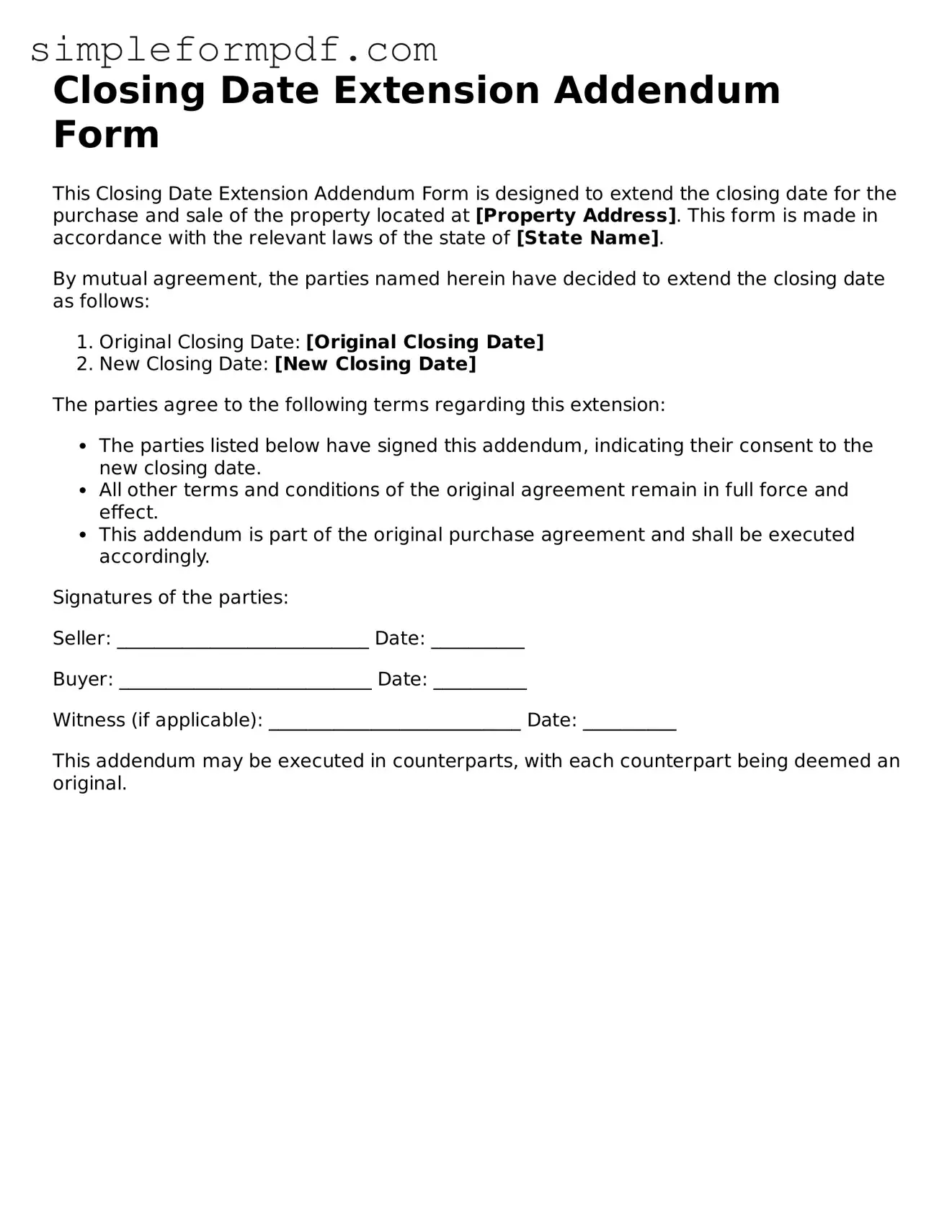Fillable Closing Date Extension Addendum Form Template
The Closing Date Extension Addendum Form is a legal document used in real estate transactions to extend the deadline for closing on a property sale. This form allows both parties to agree on a new closing date, accommodating unforeseen circumstances that may delay the transaction. Understanding how to properly fill out this form is crucial for ensuring a smooth closing process.
To get started, fill out the form by clicking the button below.
Launch Editor
